So, you’ve taken the plunge and booked and confirmed your swimming holiday! Hooray! Now to think about what you’ll need to bring with you… But packing doesn’t need to be the boring old cliché of the past. We love the excitement that comes with planning for our next trip and packing is the final step! While our list isn’t exhaustive or mandatory, here’s our pick of what are our key essentials for a swimming holiday.
Multiple swimming costumes – First on the list is something to swim in and we suggested bringing at least two swimming costumes for your trip. Having more than one swimming costume saves the dreaded need to have to put a wet pair of togs back on for your afternoon swim and it’s also a great chance to show off your funky trunks or costumes to your new tripmates! (A top tip from SwimTrek Founder Simon is also to always carry a swimming costume in your hand luggage when travelling; even if you end up losing your bags, you’ll still be able to swim!)
Goggles (x2) – You’ll most likely have a favourite pair of trusty goggles that accompany you on most swims but bringing a backup is always a good idea. Having a second pair is perfect for if your old reliables start to irritate you or we encounter differing light conditions. We recommend one clear lens and one tinted lens to be prepared for both.
Environmentally friendly sunscreen - It is important to remember to protect yourself from the sun, even if swimming in cloudier conditions. Your back in particular will likely have several hours exposure to the sun each day, and so it is essential to take the necessary steps so that your skin doesn’t burn! We strongly recommend a sunscreen that is kind to the environment that we are lucky enough to enjoy swimming around. Mineral based sunscreens contain less harmful ingredients than chemical sunscreen and are importantly not linked to coral bleaching. For further protection, a rash vest is a great idea for locations where the sun is more intense, such as Egypt, the Galapagos, Belize and the Maldives.
The only reef safe sunscreen are the ones that provide a physical barrier (zinc, titanium oxide, or clothing).
Here are some tips:
Wear sun protection clothing: Covering your skin with clothing that’s UPF-rated significantly reduces the amount of sunscreen you need to wear. Learn more about sun protection clothing.
Avoid oxybenzone or octinoxate: Evidence suggests that oxybenzone and octinoxate are two of the more harmful chemicals for reefs found in sunscreens.
Choose a non-nano, mineral-based formula: According to the National Park Service, mineral-based sunscreens that use ingredients like zinc oxide and titanium oxide are not associated with coral bleaching and therefore are less impactful to reefs. When choosing a mineral-based sunscreen, make sure it's labelled as "non-nano." This means that the particles in the sunscreen are larger than 100 nanometres and therefore too large to be ingested by coral.
Avoid parabens: These are preservatives found in some skin-care products including some sunscreens. Butylparaben has been shown to cause coral reef bleaching, and some health questions surround parabens in general, so many brands don’t use them and promote their sunscreens as “paraben-free.
Use a rub-on lotion: Use a lotion that you rub onto your skin rather than a spray that can easily land on the sand and wash into the ocean. Look for good water resistance: A sunscreen that stays on longer when you’re in the water is less likely to wash off. To maximize your sunscreen's water resistance, always follow the application instructions pertaining to how long to wait before jumping in the water.
Towel (x2) A towel is essential for drying yourself off after a swim session and to ensure you don’t get cold. It’s a good idea to bring two with you so that you can alternate them between the days and so they don’t get too wet or salty! A microfibre towel is also a great second lightweight option for carrying in a day pack.
Light sweater / wind breaker When out on the boat you can experience a little wind chill and you also can never tell when you may be surprised with a spot of rain! Having a light jumper to slip on after a swim is a great option to warm up after your dip as well as a handy thing to take with you in the evenings when out for dinner if it gets chilly.
Sun hat and sunglasses Plenty of our swim location are blessed with many days of sun per year and so it is important to remember to protect yourself other than just with your sunscreen. A sun hat in particular is an essential to prevent burning of your face, head and neck as we will stop for our lunches at the time of the day when the sun is at its most intense and you may not realise its strength on your skin, particularly if your skin is still wet and cool from your swim.
An underwater camera Bring this along and you’ll be one popular person! A camera is a great toy for capturing some incredible underwater shots of you and your tripmates. It’s also a handy tool for capturing your stroke and watching as your technique improves over the week!
What you don’t need to worry about - Swim caps – SwimTrek will provide you with swimming caps once you arrive and they act as a great souvenir after you’ve finished your trip - Drinks and snacks – SwimTrek will provide electrolyte drinks and water during your swim and a mix of snacks such as fruit, nuts and sweets after your swims - First aid kit – Our guides are fully trained first aiders and all carry a fully stocked first aid kit out on the swims with them
We hope that's enough to get you excited and get packing for your trip!

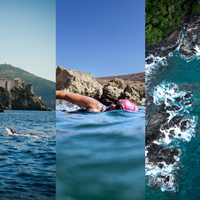
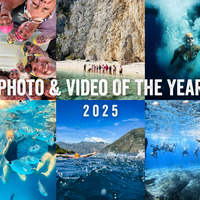
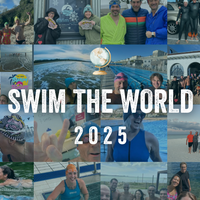
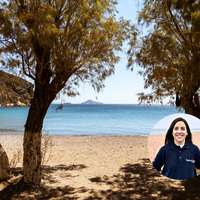
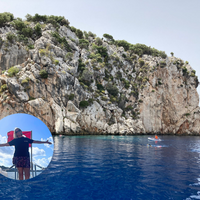

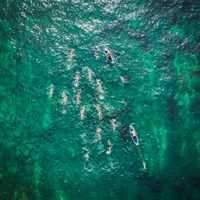
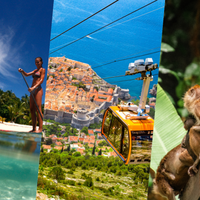
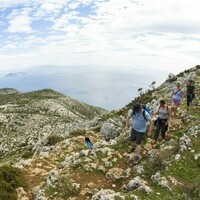
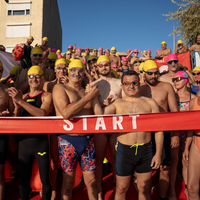
Margaret Ehrenberg @swimtrekker_kqq165q8
Something I’ll bring in my second trip this summer, having learnt from my first holiday, is a pair of very light cotton shorts, which can be put on over my cozzie, for sitting on the boat at lunchtime.
posted almost 7 years ago